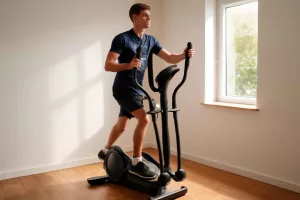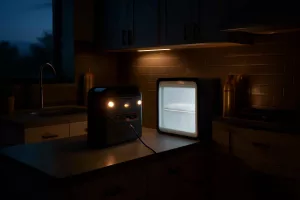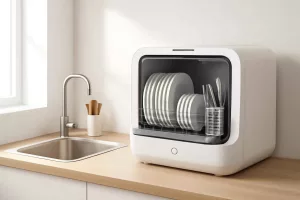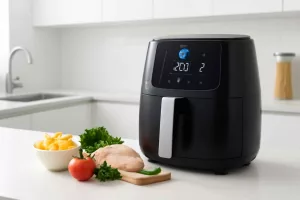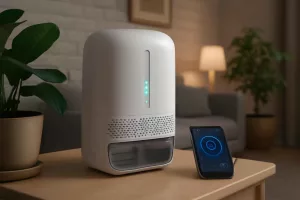When you live in a compact space, every square inch counts. Traditional tank water heaters often take up valuable room in a closet or utility area, while electric tankless models deliver on-demand hot water without the bulky footprint. If you’re in the market for the best electric tankless water heater for small homes, this guide dives deep into the features, benefits, and top models that balance performance and efficiency. To explore available units, check out our recommendations on electric tankless water heaters on Amazon.
Why Choose an Electric Tankless Water Heater for Small Homes?
Space constraints are a major challenge in small homes and apartments. Tankless water heaters eliminate the need for a storage tank, freeing up floor or wall space for other uses. These units heat water only when you turn on a faucet or shower, which significantly reduces standby heat loss and can translate to energy savings of up to 30% compared to traditional tank models.
Electric tankless water heaters also offer precise temperature control through digital thermostats, ensuring a steady supply of hot water at your preferred degree without fluctuation. Many units feature self-modulation technology that adjusts electricity consumption based on water flow, optimizing efficiency and reducing utility bills. For homeowners concerned about leaks and water damage, pairing a tankless heater with water leak detectors provides extra protection by alerting you to even minor drips before they become costly problems.
Another advantage is ease of installation—electric tankless models typically require only a proper electrical circuit and cold-water supply connection, avoiding the venting requirements of gas-powered alternatives. This makes them ideal for retrofit projects in tight spaces. With no combustion process, electric units also have a lower risk of carbon monoxide issues, making them safer for enclosed areas.
Overall, if you’re looking for a compact, efficient solution that fits snugly into a small home or apartment, the features of electric tankless water heaters align perfectly with the needs of space-conscious homeowners prioritizing performance and energy savings.
Top 5 Electric Tankless Water Heaters for Small Homes
Below are our expert picks for the best electric tankless water heater for small homes. We evaluated flow rate, temperature rise, energy efficiency, installation requirements, and reliability to narrow the field to five standout models.
1. EcoSmart ECO 11 Electric Tankless Water Heater
The EcoSmart ECO 11 is one of the most compact and popular models for small homes. With a flow rate of up to 2.7 gallons per minute (GPM) and digital temperature control adjustable in 1-degree increments, it delivers instant hot water for a single shower or sink. Self-modulation technology adapts energy use based on demand, making it one of the most energy-efficient choices in its class.
Installation is straightforward with a NEMA 6-20R dedicated circuit. Its lightweight design allows for easy wall mounting in closets or utility rooms. The EcoSmart brand is known for durability and customer support, and replacement parts are readily available.
Check current pricing and user reviews on Amazon: EcoSmart ECO 11 electric tankless water heater.
2. Stiebel Eltron Tempra 12 Plus
The Stiebel Eltron Tempra 12 Plus offers a slightly higher flow rate of 3 GPM, making it suitable for a small home with simultaneous use at two low-demand outlets. Its advanced flow control maintains consistent output temperature even when demand fluctuates, preventing cold spikes when someone flushes a toilet or runs another tap.
This model features onboard diagnostics that display error codes for quick troubleshooting. The low solenoid valve helps prevent scale buildup, extending the unit’s lifespan. Installation requires a 40-amp double-pole breaker and dedicated wiring, but the compact footprint makes it convenient for tight locations.
Compare pricing here: Stiebel Eltron Tempra 12 Plus.
3. Rheem RTEX-13 Electric Tankless Water Heater
Rheem’s RTEX series is known for offering solid performance at an entry-level price point. The RTEX-13 model provides up to 3.1 GPM, enough for a shower and kitchen sink, with external thermostatic controls for easy temperature adjustments. Its copper immersion heating elements enable fast heat-up times and even temperature distribution.
The unit comes with a digital display that shows precise output temperature. Rheem includes extra copper fittings and a mounting bracket, simplifying the installation process. For small homes, the RTEX-13 strikes a balance between affordability and functionality.
Find current offers on Amazon: Rheem RTEX-13 electric tankless water heater.
4. Bosch Electric Tankless Water Heater Tronic 3000T
Bosch’s Tronic 3000T series features plug-and-play models that require no complex wiring. The Tronic 3000T 2.5 is ideal for a single fixture or small sink, while the 4.0 model supports slightly higher flow rates for multiple low-demand applications.
Key features include integrated mounting strap for easy installation and a serviceable filter to protect internal components from sediment. Bosch’s compact design makes it a go-to choice for under-sink mounting in kitchens or bathrooms.
Explore the options on Amazon: Bosch Tronic 3000T electric water heater.
5. Atmor AT-900SS Electric Tankless Water Heater
The Atmor AT-900SS offers up to 2.5 GPM at a 35°F temperature rise, making it suitable for a small bathroom or single sink application. Its stainless steel heating chamber ensures durability and resists corrosion over time. The plug-and-play design includes a 10-foot power cord with a 30-amp plug, eliminating the need for hardwiring.
Built-in temperature control and an LED display allow you to set and monitor water temperature with ease. Atmor includes a comprehensive installation kit, so you get all necessary fittings in one package.
Check availability here: Atmor AT-900SS electric tankless water heater.
Key Features to Look for in a Small Home Electric Tankless Water Heater
Choosing the perfect electric tankless water heater involves more than just picking the smallest model. Here are the most critical features to evaluate:
Flow Rate (GPM)
Flow rate, measured in gallons per minute, determines how much hot water a unit can deliver. A single fixture like a kitchen sink typically requires 1 to 1.5 GPM, while a shower needs around 2.5 GPM. For a small home where you might run a shower and faucet concurrently, look for a unit offering at least 2.5 to 3 GPM.
Temperature Rise
Temperature rise indicates how many degrees above incoming water temperature the unit can heat. If your incoming ground water is around 50°F and you want a 105°F output, you need at least a 55°F rise. Check manufacturer charts to ensure the model meets your climate zone requirements.
Electrical Requirements
Electric tankless units draw significant current. Models with higher flow rates require 40 to 60 amps at 240 volts and proper gauge wiring. Verify your breaker panel can accommodate the new circuit without compromising other appliances.
Digital Controls and Displays
Precise temperature adjustment is a hallmark of modern tankless heaters. Look for units with digital controls that let you set the output in single-degree increments, display water temperature in real time, and show diagnostic codes for easier troubleshooting.
Installation Footprint
Compact dimensions and wall-mount designs are essential for space-saving. Some models offer plug-and-play configurations, ideal for under-sink installation, while others require hardwiring. Confirm clearance requirements and mounting hardware before purchase.
Warranty and Support
A reliable warranty ensures peace of mind. Many brands offer 5-10 year warranties on heating elements and 1-5 years on parts. Consider the manufacturer’s reputation for customer service and the availability of replacement components.
Installation Tips for Electric Tankless Water Heaters
Proper installation is crucial for safety, performance, and long-term reliability. While hiring a licensed electrician and plumber is often recommended, here are key steps and tips for DIY-minded homeowners:
1. Verify Electrical Capacity
Before installation, confirm your breaker panel has enough capacity for a dedicated 240-volt circuit. If you’re replacing an existing tank unit, the panel may need an upgrade to handle the higher amperage demands of a tankless heater.
2. Select the Right Location
Install the unit as close as possible to the point of use to minimize wait time for hot water and reduce heat loss. Under-sink installations can benefit from integrated plug-and-play designs, while larger models mount in utility closets or laundry rooms.
3. Plumbing Connections
Shut off the main water supply and drain the lines before cutting into your existing plumbing. Use flexible connectors and isolation valves for easy servicing down the road. Always install a temperature and pressure relief valve if required by local code.
4. Electrical Wiring
Run appropriately gauged wires from the breaker panel to the heater location. Secure the wiring and attach it to the unit’s terminal block according to the manufacturer’s instructions. Ensure all connections are tight and protected by a weatherproof junction box if in damp areas.
5. Testing and Commissioning
After wiring and plumbing are complete, open isolation valves slowly to fill the unit. Check for leaks, then restore power and set the desired temperature. Run hot water at multiple outlets to confirm stable output and verify the unit cycles correctly under various flow conditions.
If you’re comfortable with home automation, integrating a smart thermostat or flow sensor can optimize heater operation. For detailed wiring of control devices, see our DIY Wi-Fi thermostat installation guide.
Maintenance and Troubleshooting
Regular maintenance ensures your electric tankless water heater continues to perform efficiently for years. Follow these guidelines to keep your unit in top shape:
Flush to Remove Mineral Scale
Hard water can cause mineral buildup inside heating elements, reducing efficiency. Once or twice a year, flush the unit with a descaling solution following the manufacturer’s procedure. This process typically involves connecting hoses to service ports and circulating vinegar or a proprietary cleaner.
Clean Inlet Filter
Most models include a sediment filter on the cold water inlet. Check and clean this filter every six months to prevent debris from clogging the unit.
Inspect Electrical Connections
Turn off power and visually inspect wiring terminals for corrosion or looseness. Tighten any loose screws and replace damaged connectors to prevent arcing or overheating.
Monitor Error Codes
Modern tankless heaters display diagnostic codes for common issues like overheating or low water flow. Keep your owner’s manual handy to decode alerts and address minor faults promptly.
Professional Servicing
If you encounter persistent error codes or performance drops, contact a qualified technician. Regular professional maintenance every two to three years can extend the life of your unit and maintain warranty coverage.
Energy Efficiency and Cost Savings
Electric tankless water heaters can deliver significant energy savings compared to traditional storage tank units. By heating water only when needed, they eliminate standby heat loss, which accounts for up to 25% of a tank heater’s energy use. According to industry data, homeowners can expect a reduction in water heating energy consumption by 24% to 34%, depending on usage patterns and climate conditions.
To calculate potential savings, compare the energy factor (EF) ratings of tank and tankless models. Higher EF indicates greater efficiency. Combine a tankless heater with low-flow faucets and showerheads to further reduce overall hot water demand. Tracking your utility bills over several months can reveal the true impact, especially when paired with other efficiency upgrades like compact portable dishwashers that use less water per cycle.
Factoring in installation costs and lifespan—tankless models often last 20 years or more versus 10-15 years for tanks—homeowners often recoup their investment within 3 to 5 years through lower energy bills.
Conclusion
For small homes and apartments, an electric tankless water heater offers a space-saving, energy-efficient solution to meet hot water needs. By evaluating flow rate, temperature rise, electrical requirements, and digital controls, you can choose the best electric tankless water heater for small homes that aligns with your usage patterns and budget. Our top five picks—from the compact EcoSmart ECO 11 to the plug-and-play Atmor AT-900SS—cover a range of capacities and price points.
Proper installation and routine maintenance will ensure reliable operation for years to come, while energy savings help offset upfront costs. Enhance safety and convenience by integrating water leak detectors and smart controls. With the right choice, you’ll enjoy instant hot water and peace of mind without sacrificing precious square footage in your small home.
Ready to shop? Explore detailed reviews and current pricing on Amazon for these highly rated models using our suggested search links above, and transform your small home’s hot water system today.

